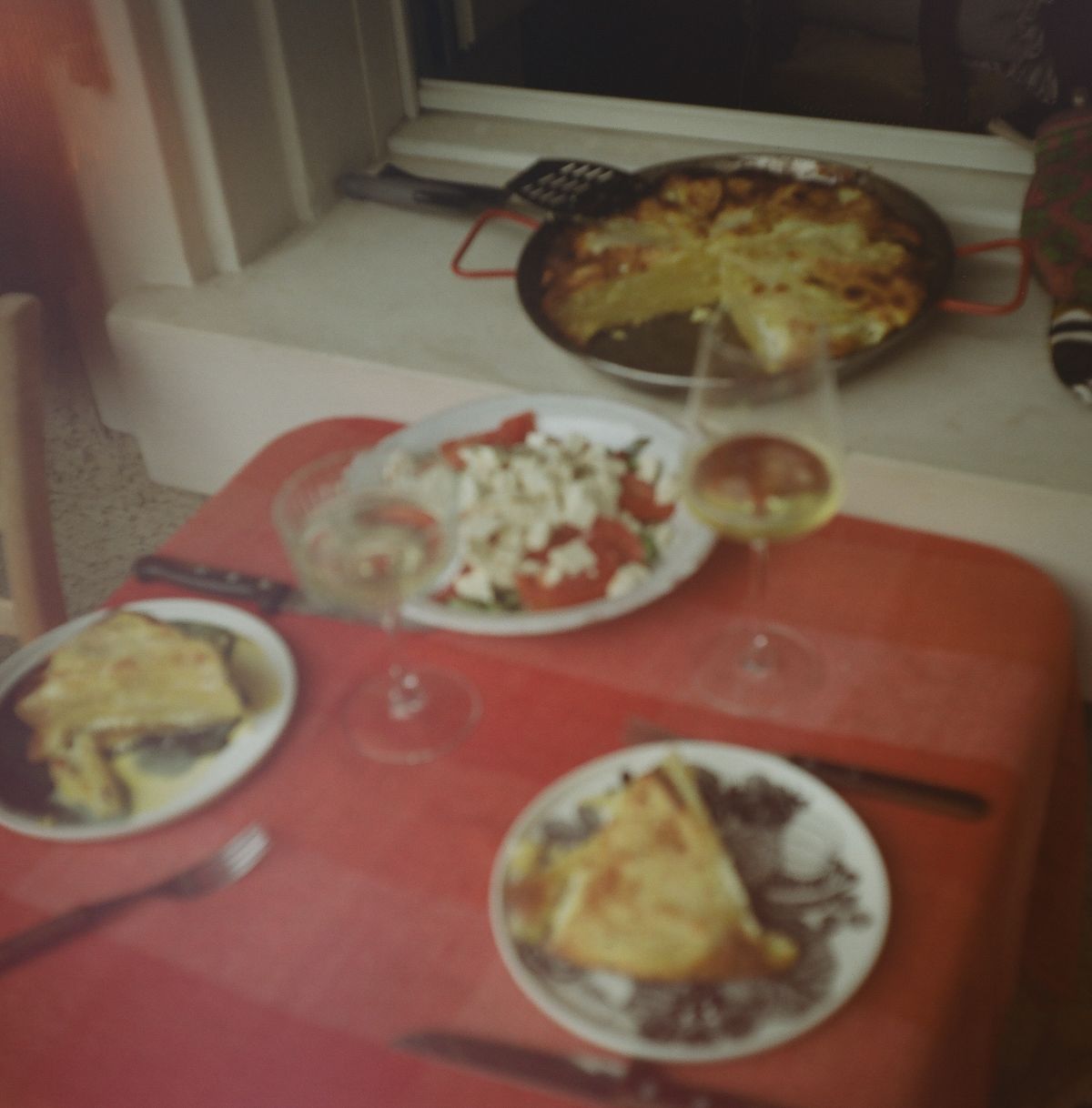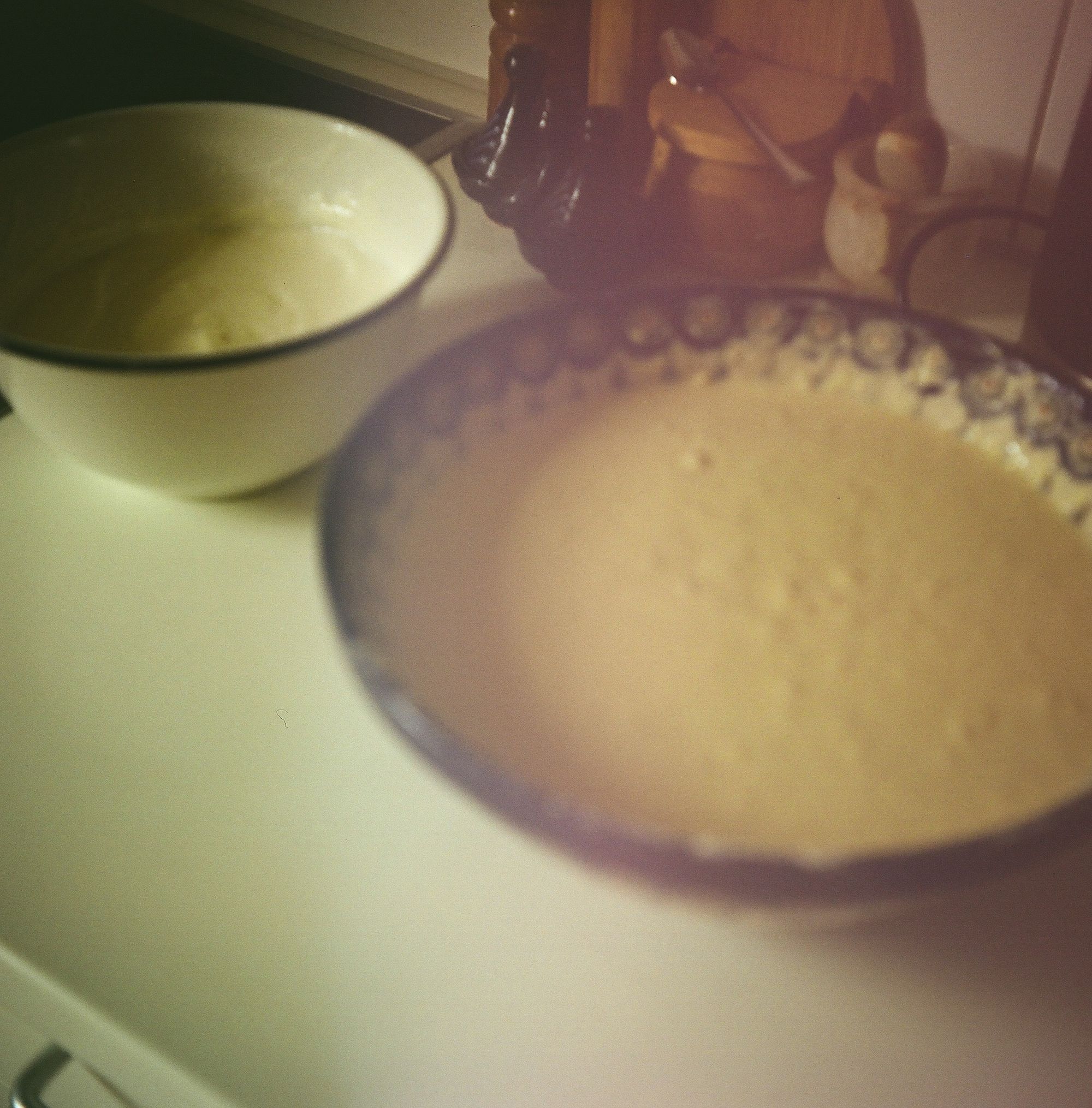What to eat KOSOVO 🇽🇰 Flija
Flija is typical highlander fare... The name flija translates as “sacrifice,” likely due to the length of time and skill involved in the process. The dish is traditionally associated with idyllic rural life. In Kosovo, March 17 is designated as Flija Day...

Flija
Published October 27, 2023 · by Amanda Rivkin
Flija is typical highlander fare consisting of pancake batter and yogurt cooked together under a heavy spherical metal dish called a saç. The saç is typically heated on a wood burning fire and functions like a broiler, cooking the ingredients underneath it in a circular pan to perfection.
The name flija translates as “sacrifice,” likely due to the length of time and skill involved in the process. The dish is traditionally associated with idyllic rural life. In Kosovo, March 17 is designated as Flija Day, an indicator not just of the dish’s popularity but also its association with the nascent nation-state of Kosovo. Flija is often served with sides that include honey, pickled vegetables, the yogurt drink ayran and white cheese.
Not much is known about the origins of the dish. Kosovar academic Arsim Canolli, the author of an Albanian language volume on flija, wrote in his dissertation for the University College London that it has come to mean something like a “fantasy places for urban alienation” for the young nation. In his dissertation, “Behind Open Doors,” Canolli notes, “Kosovar food culture is characterized by its peasant, Ottoman and socialist past.” He adds, “Most Kosovars claim that ‘fli,’” or flija, “and ‘tavë’ are [sic] icon dishes of Kosovar cuisine.”
Kosovo is not a wealthy country. It is not a UN member state, due to objections from Serbia and other European countries including Spain, which has had to contend with numerous independence movements within its own borders over the years. The war in Kosovo in 1999 led to the country’s declaration of independence from Serbia but also left deep scars and traumatized generations.
Late Serbian leader Slobodon Milosevic had deep animus towards notions of independence percolating in the territory of the former Yugoslavia throughout the 1990s. The Kosovo Liberation Army (KLA) took up arms against Belgrade less than five years after the siege of Sarajevo ended with the Dayton Accords. Milosevic’s heavy repression not just of the KLA but of Kosovo’s Albanian population led to NATO to intervene. It also resulted in a diaspora scattered across Europe and the globe.
NATO maintains a force present in the country to this day, including at a base known as Film City for its location in an old film studio in the capital Prishtina. The NATO Kosovo Force, or KFOR as the mission is known, patrols in the disputed northern part of the country where many ethnic Serbs reside. It also patrols in the contested city of Mitrovica, where a bridge divides the local Kosovar Albanian and Kosovar Serbian populations.
Serbia and Kosovo have nearly come to blows in recent years over matters as miniscule as license plates, and issues as serious as policing and political life. As a consequence of the conflict and ongoing tensions, there is little tourism from the rest of Europe or the outside world as a result. Diaspora tourism makes up for some of the deficit. Many return home in the summer and contribute to the economy in other ways, such as through remittances.
Canolli argues, “The diaspora visitors” are “the main agents” seeking an idyllic form of rural life in the country’s food and restaurant culture “in postwar Kosova, as a way of experiencing ‘home’, ‘locality’, ‘tradition’, ‘nation’ and authenticity.” Flija as the national dish is an essential aspect of the experience of recovering all that is local for the country’s influential and globalized diaspora, which counts pop megastar Dua Lipa.

Recipe
Ingredients:
150 grams of Turkish 10% milk fat yogurt
360 grams of crème fraiche
200 grams of butter
1 kilo flour
4 eggs
1 liter of milk
1 tablespoon of salt
Olive oil
Directions:
Step 1: For the yogurt custard batter, melt the butter. Whisk the crème fraiche and Turkish yogurt together. Pour in the melted butter. Whisk again. Refrigerate overnight.
Step 2: The next day, before mixing the second pancake-like batter, pre-heat the broiler to a medium to high heat, approximately 200 degrees centigrade.
Step 3: Take out the refrigerated yogurt custard batter from the night before and bring to room temperature. Stir to mix whatever skin may have settled on the top.
Step 4: Mix one kilo of flour with four eggs, making a little well in the middle for the eggs. Slowly add the milk stirring as it is absorbed into the dough. Once the milk is blended, take a whisk and remove any flour pockets.
Step 5: Grease a round tray with olive oil. I used a paella pan.
Step 6: Begin with the flour and egg batter. Using a spoon, make a sundial-like pour onto the round tray starting at the edges and working towards the center so there are triangles of the flour batter while maintaining empty space in between. Place under the broiler for 2-5 minutes until slightly golden brown.
Step 7: Spread the first thin layer of yogurt and sour cream batter gently over the entire tray and return to stove.
Step 8: Pull the tray out after 2-5 minutes and repeat step six where there was not yet pancake batter, in similar sun dial fashion.
Step 9: Repeat steps 6-8 until all desired batters are used and a crispy layered pancake with yogurt nestled between the layers results. This may take around two hours of meticulous repetition.
Step 10: Serve with ayran, cucumbers, olives and feta or picked vegetables or honey. It is a savory dish which can be balanced with sweet or sour depending on one’s palette.
Tips, tricks and notes:
This video from Kosovo’s Ministry of Agriculture, Forestry and Rural Development is an extremely useful visual how-to aid provided by our friend Kushtrim in Kosovo:
Learn where to eat Kosovar food in Switzerland.
Follow our social media pages @swissglobaldining on Instagram, TikTok and YouTube